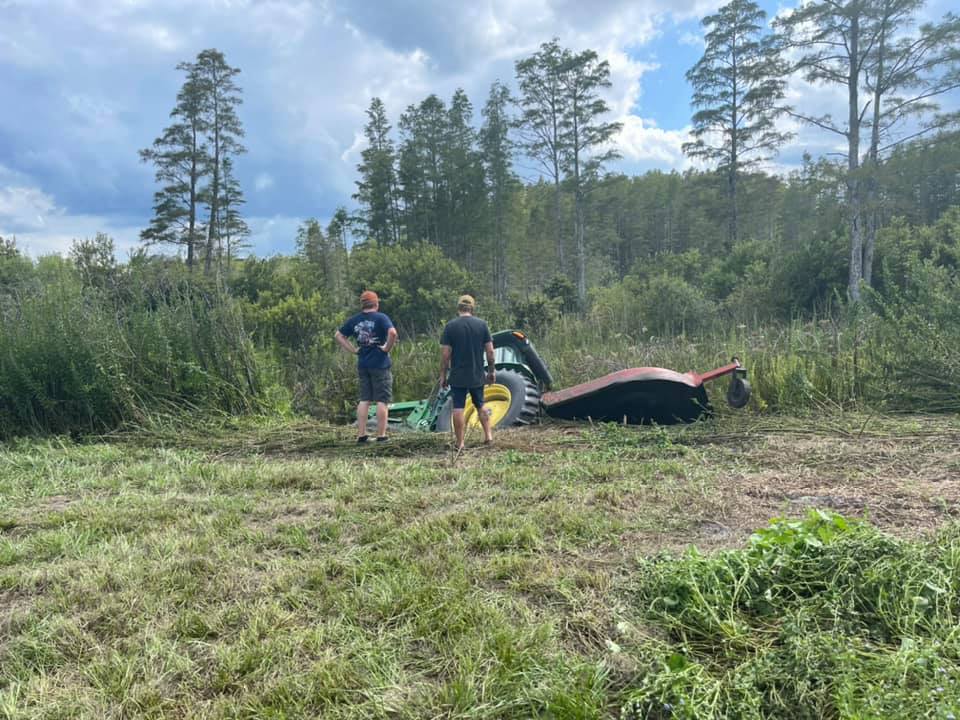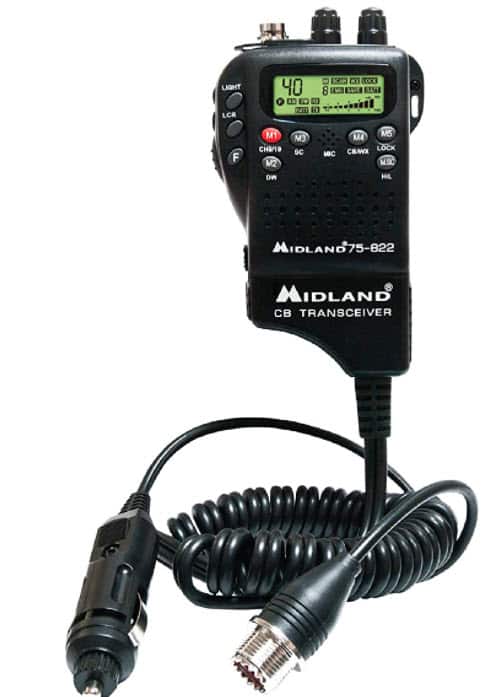
How to Prevent a Bush Hog Tractor Accident
Introduction
Avoiding accidents is key to operating a profitable business. Any accident will reduce your productivity, possibly increase your insurance, and maybe impact your health.
I am sure the tractor operator never saw this coming. One respondent on a Facebook group (All Things Tractors) commented she lost two family members in tractor accidents! I personally backed into a hog wallow and found myself with a front tire in the air. As I backed the brush hog into the dense vegetation it covered the hole and I never saw it. Fortunately, the hole was not as deep as the one in the picture.
There are many ways to have a bush hog tractor accident. Everyone is bound to have an accident if you do enough of this type of work. The goal is to minimize the damage and remain safe when it happens.
Why bush hogging can be dangerous
Anytime you bush hog there are multiple ways for you to get hurt, or those nearby. Big machines with limited visibility, spinning parts, and throwing debris can lead to accidents. Being familiar with your equipment, equipment limitations and your limitations will reduce the chances of a bush-hogging accident.
Proper Preparations
When things go wrong, they go wrong fast. Inspecting the equipment before use does multiple things. First, it tunes you into the job at hand. It mentally focuses on being aware and ready. Second, you may catch an issue such as a missing pin or leaking seal before it results in a catastrophic situation in the field. Responding to a breakdown in the field only increases your chances of having an accident. Take your time and plan accordingly so you don’t need to rush.
Safety Gear
It is easy to bush hog wearing sneakers and regular clothing. You don’t appreciate safety equipment until after you have had an accident. Any accident related to safety equipment is likely to be linked to bodily harm.
- Wear appropriate clothing that protects against the sun, hot parts, and yellow jackets, and is not to lose that it is likely to get caught in a moving part.
- Steel-toe shoes protect against dropping items such as tools or implements. They also provide traction when getting on and off the tractor.
- Gloves, glasses, sunscreen, and mosquito spray all aid in recovering from an accident.
- Wear your seatbelt. Getting separated from your seat can easily get you crushed or wedged in a submerged tractor.
Operating Tips
Understand the tractor’s capabilities and limitations. Most accidents result in the operator knowing they pushed the limits but did it anyway. We naturally want to see what our machines can do but when we reach the limit things break.
Go slow. Operating slowly in dangerous situations gives you time to process more information before an accident. When bush hogging, you can see obstacles with time to react. Holes in fields are a real hazard that going slow helps to avoid.
Avoid steep terrain. Operating at a side angle is asking for big trouble. A rollover is a major issue and may total your tractor and bush hog. Go straight up and down steep angles, especially around water.
Utilizing the proper gear and speed can aid you in maintaining control. Low gears and a slower speed typically result in lower-cost repairs if an accident occurs.
Obstacles come in many forms including holes, stumps, branches, and trash. Walking the field and talking to the owner will reduce the chances of an accident. Many owners do not know what is on their land which is why you should walk it before even giving a quote.
Emergency Preparedness
Emergency action drills create muscle memory when there is no time to think. Work through scenarios in your mind of what you would do if X were to happen. Once of the best things you can do by reflex is to stop the tractor and the bush hog. Anything in motion will likely exacerbate the severity and difficulty of the situation. Stop, evaluate and take action.
Having a first aid kit handy is important. You might need some small bandaids but you should also have trauma supplies. Accidents bush hogging are not likely to be minor scrapes. Multiple tourniquets, rolls of gauze, stop-bleed patches, and pressure bandages are the types of first aid supplies needed.
Conclusion
By following these safety guidelines, you can prevent tractor accidents while bush hogging and ensure a safer working environment.
If you have an accident, you will need to be able to get help. If you are not on your land, you will need to be able to identify your location so people can find you. A free mobile app like PubSafe SOS is a good tool because it shares your location on a map and alerts other members nearby which may be able to respond faster than emergency services if close by. A mobile app requires cellular coverage which may not always be available. When out of cellular coverage, a CB radio like the Midland 75-822 is a good option provided you have setup a safety plan with your location and have someone to call.
The Importance Of Tractor Insurance
These pictures highlight the importance of having multiple policies for conducting bush hog tractor services. Insurance protects you, your family and the customer. Insurance will likely run about $2,000 per year. As a land owner, if someone gets hurt on your property and has no insurance, you can be sued and liable. Spend the extra money and be sure to hire an insured professional bush hogging service near you.
To be fully insured a minimum of:
- General liability
- Workers compensation
- A policy that covers damage while in route (regular auto will not apply in most cases)
- Gap insurance for a new tractor with negative equity
- A policy that covers damage while being used for business
Contract a licensed insurance agent for recommended insurance based on your situation.



